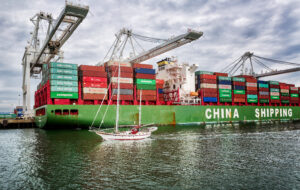The global shipping industry facilitates over 90% of world trade, involving a diverse array of stakeholders such as port authorities, customs officers, freight forwarders, and shippers.
Each entity plays a crucial role in ensuring the timely, safe, and efficient transportation of goods across vast distances.
A fundamental grasp of shipping terms is essential for navigating this intricate industry. Proficiency in basic shipping jargon enables individuals to facilitate effective communication, optimize processes, and manage the complexities of international shipping operations.
Key Categories of Shipping Terminology
A seamless and effective shipping procedure hinges on a thorough understanding of essential paperwork and cargo categories. Below is a detailed summary of key categories:
Shipment Documentation
Bill of Lading (B/L): This document is crucial for global trade as it serves as a receipt for the cargo received for sea transport. More importantly, the B/L acts as a contract of carriage, outlining terms and conditions between the shipper, consignee (recipient), and carrier (often the shipping line). It typically includes information on freight charges, ports of loading and discharge, cargo details (type, quantity), and any special handling instructions.
Commercial Invoice: This document provides a comprehensive overview of the shipment’s commercial value. It includes details about the buyer, seller, quantity, unit price, total value, and currency used. Customs officials rely on the commercial invoice to assess whether tariffs or taxes should be applied to imported goods.
Packing List: The packing list details the contents of the shipment, including quantity, weight, measurements of each package, and a description of goods. It expedites cargo inspection and helps customs officers verify the accuracy of information on the commercial invoice.
Cargo and Containerization
Additional relevant documents may include export permits (for goods subject to export controls), certificates of origin (to verify the country of manufacture), and inspection certificates (for specific cargo requiring quality or safety checks). Containers are integral to efficient and standardized freight transport in the global shipping sector.
Understanding various cargo types and container variants is essential. Here are common categories:
Dry Bulk: Goods like grains, coal, or ores transported in bulk carriers without individual packaging.
Liquid Bulk: Liquids such as liquefied natural gas, chemicals, or oil transported in specialized tankers.
Breakbulk: Individual items requiring special handling and stowage due to size or shape, which may not fit standard containers.
Containerized Cargo: Goods packed in uniform intermodal containers for secure transport by truck, rail, or ship. Standard container sizes include the Twenty-foot Equivalent Unit (TEU), Forty-foot Equivalent Unit (FEU), and Forty-foot High Cube Equivalent (FEHC). Specialized containers like Reefer containers equipped with temperature control systems are used for perishable goods.
Essential Shipping Processes
To effectively navigate the physical path of commodities from point of origin to point of destination, one must be aware of the many stages and important actors involved. Additionally, a good freight flow depends on following customs procedures.
#1 Booking and Transportation
Three phases can be distinguished in the transportation of goods:
Pre-Carriage: This phase involves transporting the cargo from the shipper’s location to the port of loading (POL). Inland canal, rail, and truck transportation are available for this.
Main Carriage: This is the primary maritime journey from the port of loading (POL) to the port of discharge (POD), where the cargo will be unloaded. As specified in the contract of carriage (generally the Bill of Lading), the ocean carrier is normally responsible for the cargo throughout this phase.
On-Carriage: After arriving at the POD, the cargo must be moved to its final destination. This last part of the trip may once more require trucks, railroads, or barges.
Understanding these phases facilitates monitoring the cargo’s progress and pinpoints possible obstructions. Furthermore, freight terms that define who bears the expenses and risks associated with each stage of transportation, such as FOB (Free on Board), CIF (Cost, Insurance, and Freight), and DDP (Delivered Duty Paid), are essential.
#2 Customs Clearance and Regulations
The process of getting approval to import or export goods is known as customs clearance. All items are given a Harmonized System (HS) code, which is a standardized international system for classifying goods for customs purposes. The destination country’s appropriate duty rates and import taxes are determined by the HS code.
Proper and comprehensive documentation is necessary for a smooth customs clearance process. Typical paperwork includes the packing list, commercial invoice, bill of lading, and any certificates required for the particular cargo. Customs officials may also conduct inspections to verify the data on the documents. Understanding these protocols facilitates the prompt discharge of goods and prevents any delays or fines.
Additional Useful Terminology
Carrying more than 90% of the world’s products over long distances, the shipping sector is the backbone of global trade. Many parties are involved in this intricate network, including shipping companies, customs officers, port authorities, manufacturers, and exporters. Each party is essential to ensuring the prompt, safe, and effective transportation of cargo.
However, navigating this complex system requires a consistent vocabulary in shipping terms. Proficiency in basic shipping jargon facilitates effective communication, optimizes processes, and manages the intricacies of the international shipping sector. Understanding the following terminology can enhance comprehension of the shipping process.
Incoterms
The International Chamber of Commerce (ICC) publishes standardized regulations for international trade known as Incoterms (International Commercial Terms). These terms specify the obligations of both buyers and sellers in foreign sales contracts, particularly regarding expenses, risks, and transportation.
It is crucial to have a comprehensive understanding of terms such as FOB (Free on Board), CIF (Cost, Insurance, and Freight), and DDP (Delivered Duty Paid).
Free on Board (FOB): Under FOB terms, the seller’s liability ceases when the goods pass over the ship’s railing at the port of loading, after which the buyer assumes responsibility for all costs and risks associated with shipping and customs clearance.
Cost, Insurance, and Freight (CIF): On CIF terms, the buyer covers minimum marine insurance, ocean freight to the port of discharge, and loading costs. However, the buyer assumes the risk of loss or damage to the cargo once it crosses the ship’s railing at the port of loading.
Delivered Duty Paid (DDP): DDP terms impose the highest level of responsibility on the seller, who is accountable for all expenses and liabilities associated with shipping the goods to the specified location at the buyer’s property, including customs clearance.
Cargo Handling Terminology
Lashing: Securing cargo to prevent movement or damage during transportation often involves fastening goods to a ship’s deck or inside a container using chains, straps, or specialized tools.
Dunnage: Cargo may be secured with airbag inserts, wood, or other protective materials to fill gaps and cushion against shocks and vibrations during transit.
Fumigation: Fumigation is the process of applying fumigants or insecticides to cargo to eliminate pests and prevent their spread, often required for compliance with import regulations, particularly for certain agricultural products.
Other Terms
Demurrage and Detention Charges: Shipping companies or terminal operators may impose charges when containers exceed their allotted time at ports or terminals. Detention fees apply to delays at the terminal, while demurrage fees apply to delays during the cargo’s ocean voyage. Understanding these fees helps companies manage costs associated with unforeseen delays.
Container Freight Station (CFS): A Container Freight Station (CFS) provides services including customs clearing, packing, unloading, storage, and other services related to containerized cargo. Shippers utilize CFS services for short-term storage before onward transportation, as well as for cargo consolidation or deconsolidation.
Conclusion
Gaining a grasp of the fundamental vocabulary of shipping empowers individuals to navigate the complexities of the global trade network. Understanding key terms minimizes the risk of delays or errors, enhances clear communication among stakeholders, and streamlines operations. Familiarity with shipment documentation, cargo classifications, essential shipping procedures, and other relevant jargon establishes a solid foundation for success in the ever-evolving shipping industry.
Industry associations and the internet offer abundant opportunities for further education. Online courses and trade journals provide deeper insights into specific aspects of logistics and shipping. By expanding knowledge and mastering shipping terms, individuals can significantly contribute to the global supply chain.

























